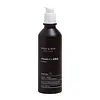What's inside
What's inside
 Key Ingredients
Key Ingredients

 Benefits
Benefits

 Concerns
Concerns

No concerns
 Ingredients Side-by-side
Ingredients Side-by-side

Water
Skin ConditioningPropanediol
SolventButylene Glycol
HumectantPEG-12 Glyceryl Dimyristate
Skin ConditioningMethyl Gluceth-20
HumectantSorbitan Laurate
EmulsifyingPhenoxyethanol
PreservativeXanthan Gum
EmulsifyingCellulose Gum
Emulsion StabilisingOryza Sativa Extract
AbsorbentEthoxydiglycol
HumectantGlycerin
HumectantMalus Domestica Fruit Cell Culture Extract
Skin ConditioningLecithin
EmollientPolyglyceryl-4 Laurate
EmulsifyingKinetin
Skin ConditioningZeatin
Skin ConditioningEthylhexylglycerin
Skin ConditioningBiosaccharide Gum-1
HumectantCitric Acid
BufferingSodium Hyaluronate
HumectantDilauryl Citrate
EmollientBaicalin
Antioxidant1,2-Hexanediol
Skin ConditioningCaprylyl Glycol
EmollientInulin Lauryl Carbamate
Emulsion StabilisingErgothioneine
AntioxidantTetrapeptide-26
Skin ConditioningWater, Propanediol, Butylene Glycol, PEG-12 Glyceryl Dimyristate, Methyl Gluceth-20, Sorbitan Laurate, Phenoxyethanol, Xanthan Gum, Cellulose Gum, Oryza Sativa Extract, Ethoxydiglycol, Glycerin, Malus Domestica Fruit Cell Culture Extract, Lecithin, Polyglyceryl-4 Laurate, Kinetin, Zeatin, Ethylhexylglycerin, Biosaccharide Gum-1, Citric Acid, Sodium Hyaluronate, Dilauryl Citrate, Baicalin, 1,2-Hexanediol, Caprylyl Glycol, Inulin Lauryl Carbamate, Ergothioneine, Tetrapeptide-26
Water
Skin ConditioningCaprylic/Capric Triglyceride
MaskingBifida Ferment Lysate
Skin ConditioningGlycerin
HumectantNiacinamide
SmoothingCetearyl Alcohol
EmollientDipropylene Glycol
HumectantAscorbic Acid
AntioxidantButylene Glycol
HumectantGlyceryl Stearate Se
EmulsifyingCetyl Ethylhexanoate
EmollientPolyglyceryl-3 Methylglucose Distearate
EmulsifyingTromethamine
BufferingHydroxyacetophenone
AntioxidantCarbomer
Emulsion StabilisingButyrospermum Parkii Butter
Skin ConditioningPalmitic Acid
EmollientStearic Acid
CleansingPanthenol
Skin ConditioningParfum
MaskingTocopheryl Acetate
Antioxidant1,2-Hexanediol
Skin ConditioningAdenosine
Skin ConditioningCaprylyl Glycol
EmollientDisodium EDTA
Pentylene Glycol
Skin ConditioningSodium Hyaluronate
HumectantSodium Hyaluronate Crosspolymer
HumectantHydrolyzed Hyaluronic Acid
HumectantHyaluronic Acid
HumectantEthylhexylglycerin
Skin ConditioningHydrolyzed Sodium Hyaluronate
Skin ConditioningWater, Caprylic/Capric Triglyceride, Bifida Ferment Lysate, Glycerin, Niacinamide, Cetearyl Alcohol, Dipropylene Glycol, Ascorbic Acid, Butylene Glycol, Glyceryl Stearate Se, Cetyl Ethylhexanoate, Polyglyceryl-3 Methylglucose Distearate, Tromethamine, Hydroxyacetophenone, Carbomer, Butyrospermum Parkii Butter, Palmitic Acid, Stearic Acid, Panthenol, Parfum, Tocopheryl Acetate, 1,2-Hexanediol, Adenosine, Caprylyl Glycol, Disodium EDTA, Pentylene Glycol, Sodium Hyaluronate, Sodium Hyaluronate Crosspolymer, Hydrolyzed Hyaluronic Acid, Hyaluronic Acid, Ethylhexylglycerin, Hydrolyzed Sodium Hyaluronate
 Reviews
Reviews

Ingredients Explained
These ingredients are found in both products.
Ingredients higher up in an ingredient list are typically present in a larger amount.
1,2-Hexanediol is a synthetic liquid and another multi-functional powerhouse.
It is a:
- Humectant, drawing moisture into the skin
- Emollient, helping to soften skin
- Solvent, dispersing and stabilizing formulas
- Preservative booster, enhancing the antimicrobial activity of other preservatives
Butylene Glycol (or BG) is used within cosmetic products for a few different reasons:
Overall, Butylene Glycol is a safe and well-rounded ingredient that works well with other ingredients.
Though this ingredient works well with most skin types, some people with sensitive skin may experience a reaction such as allergic rashes, closed comedones, or itchiness.
Learn more about Butylene GlycolCaprylyl Glycol is a humectant and emollient, meaning it attracts and preserves moisture.
It is a common ingredient in many products, especially those designed to hydrate skin. The primary benefits are retaining moisture, skin softening, and promoting a healthy skin barrier.
Though Caprylyl Glycol is an alcohol derived from fatty acids, it is not the kind that can dry out skin.
This ingredient is also used as a preservative to extend the life of products. It has slight antimicrobial properties.
Learn more about Caprylyl GlycolEthylhexylglycerin (we can't pronounce this either) is commonly used as a preservative and skin softener. It is derived from glyceryl.
You might see Ethylhexylglycerin often paired with other preservatives such as phenoxyethanol. Ethylhexylglycerin has been found to increase the effectiveness of these other preservatives.
Glycerin is already naturally found in your skin. It helps moisturize and protect your skin.
A study from 2016 found glycerin to be more effective as a humectant than AHAs and hyaluronic acid.
As a humectant, it helps the skin stay hydrated by pulling moisture to your skin. The low molecular weight of glycerin allows it to pull moisture into the deeper layers of your skin.
Hydrated skin improves your skin barrier; Your skin barrier helps protect against irritants and bacteria.
Glycerin has also been found to have antimicrobial and antiviral properties. Due to these properties, glycerin is often used in wound and burn treatments.
In cosmetics, glycerin is usually derived from plants such as soybean or palm. However, it can also be sourced from animals, such as tallow or animal fat.
This ingredient is organic, colorless, odorless, and non-toxic.
Glycerin is the name for this ingredient in American English. British English uses Glycerol/Glycerine.
Learn more about GlycerinSodium Hyaluronate is hyaluronic acid's salt form. It is commonly derived from the sodium salt of hyaluronic acid.
Like hyaluronic acid, it is great at holding water and acts as a humectant. This makes it a great skin hydrating ingredient.
Sodium Hyaluronate is naturally occurring in our bodies and is mostly found in eye fluid and joints.
These are some other common types of Hyaluronic Acid:
Learn more about Sodium HyaluronateWater. It's the most common cosmetic ingredient of all. You'll usually see it at the top of ingredient lists, meaning that it makes up the largest part of the product.
So why is it so popular? Water most often acts as a solvent - this means that it helps dissolve other ingredients into the formulation.
You'll also recognize water as that liquid we all need to stay alive. If you see this, drink a glass of water. Stay hydrated!
Learn more about Water